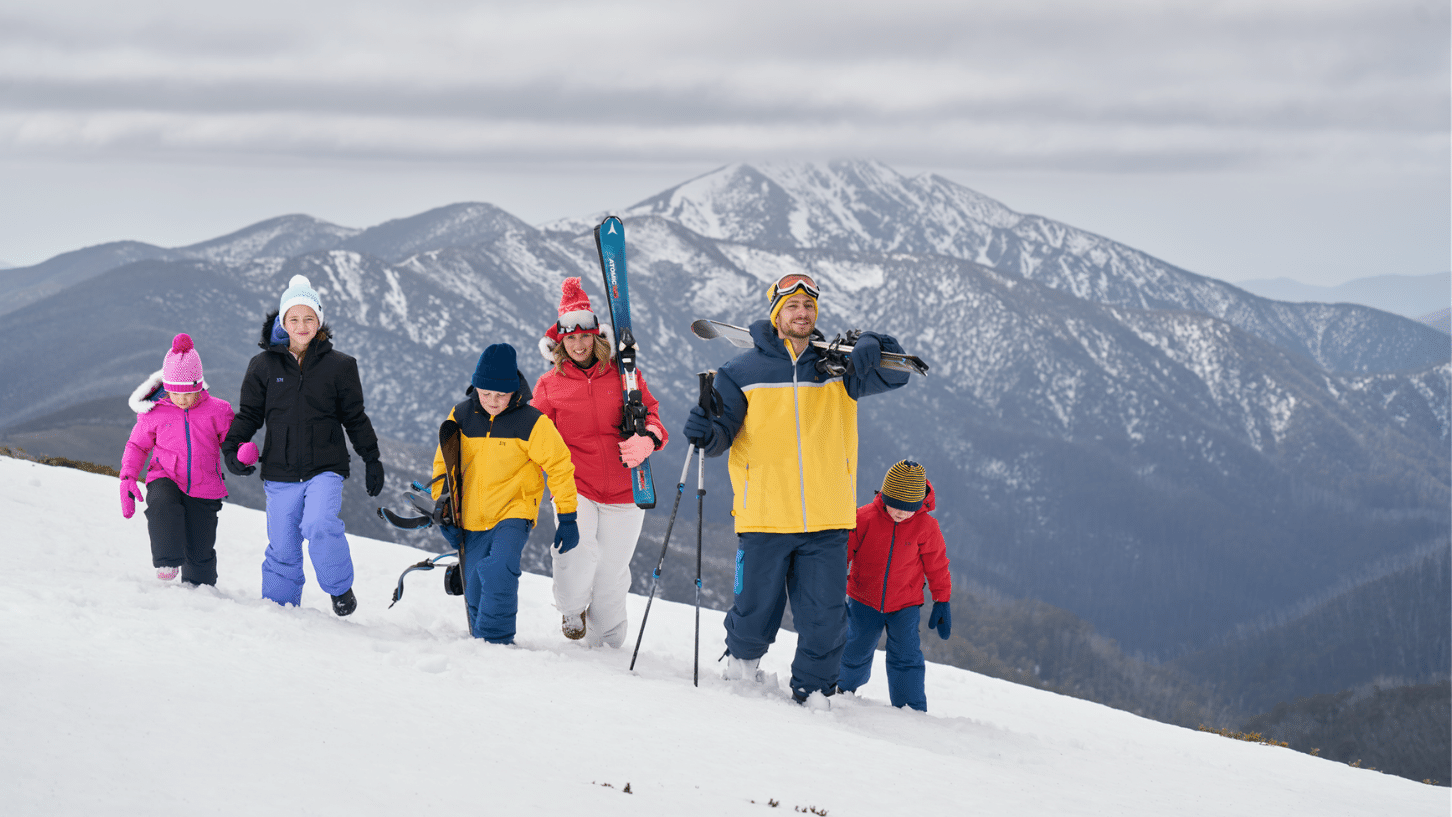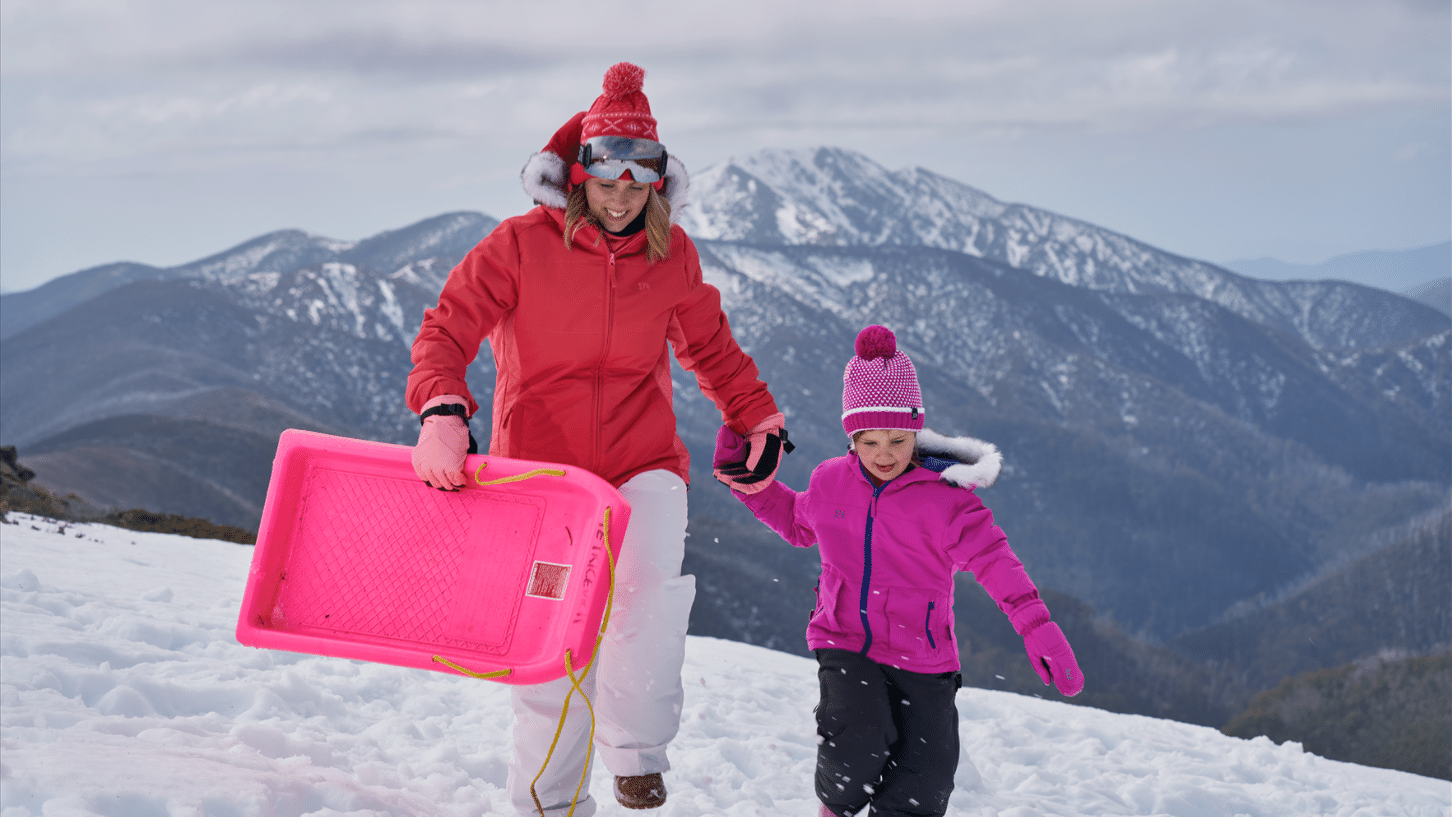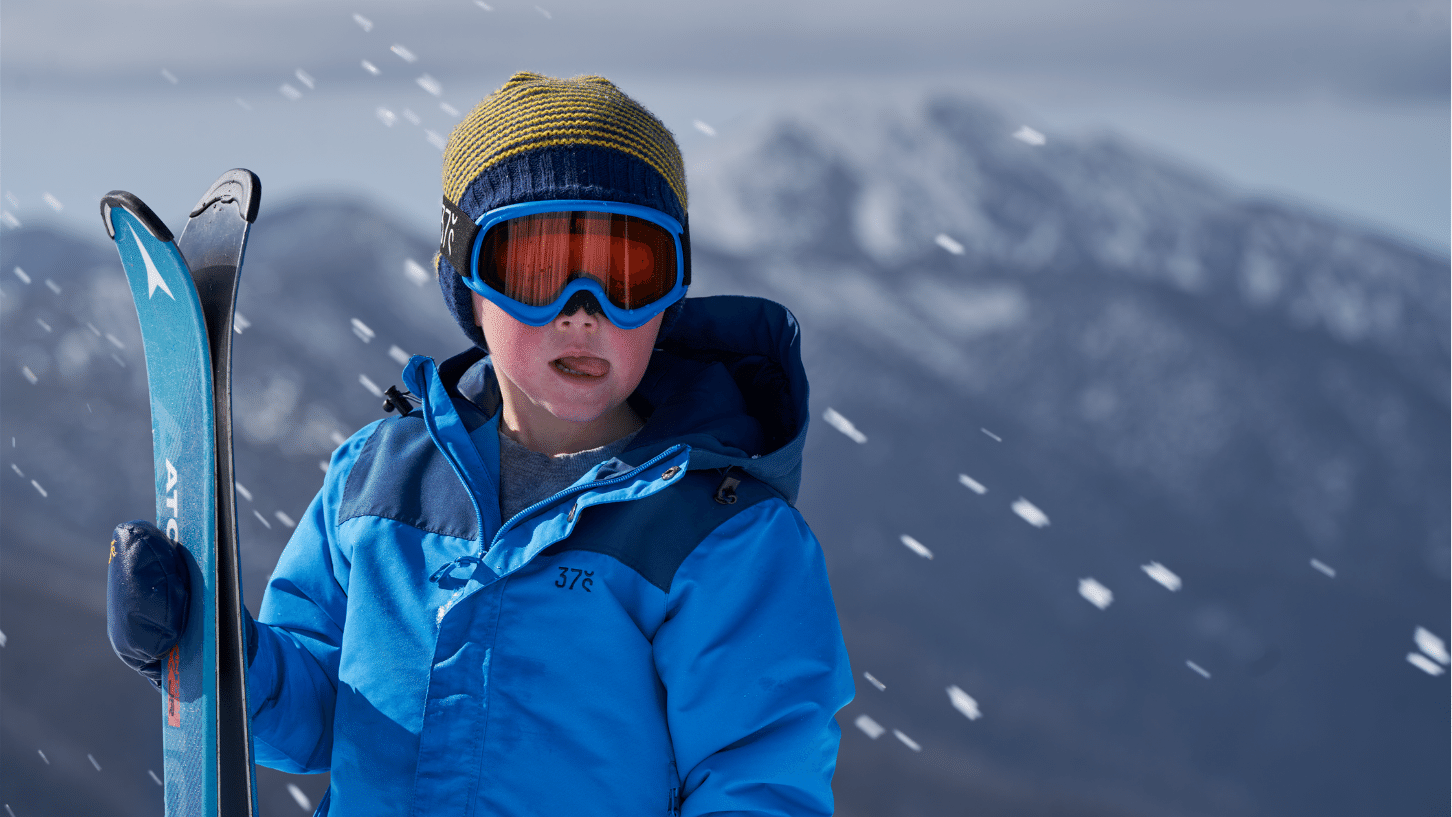| Your browser is not supported. | ||
|
Please browse our site using any of the following options:
| ||
How To Choose Snow Gear

Visiting the snow is one of the main reasons why everyone gets excited when winter first hits, but it isn't all smiles if you aren't wearing the right snow gear. Are you getting ready to go to the snow? Hitting the slopes, sledding and making a snowman are all so much more enjoyable when you're toasty and warm - instead of frozen solid. This snow gear buying guide will talk you through how to correctly choose all of the snow gear you will need for when visiting the snow, from what to wear under snow gear to finishing your snow outfit.
Quick Links
- What Is The Best Snow Gear?
- Head - Protecting Your Head, Ears, Face & Neck
- Body - Keeping Your Arms, Legs & Torso Warm & Dry
- Hands - How To Keep Your Hands Warm & Toasty
- Feet - Keeping Your Feet Dry & Comfortable
- How To Wash Snow Gear
What Is The Best Snow Gear?
Like many things in life, what's best for someone else might not be best for you. The best snow gear for you depends on your particular needs and preferences. This can include how much you feel the cold in general or how often you'll go to the snow (once a year or almost every weekend during the snow season?). You also have to consider the conditions you expect to face (temperature, rain, snow) and how extreme your snow adventures will be (will you be doing any acrobatics or heli-skiing?).

What Snow Gear Do I Need?
Working out which snow gear to buy is easier when you break it down into these five steps (from the top down):
Head - Protecting Your Head, Ears, Face & Neck
How to protect your head from injury and the cold when you hit the slopes.
Helmet
Rarely seen back in the day, a helmet is now a safety essential, with many ski resorts not letting anyone on the snow without a helmet. Helmets also have the added benefit of helping keep your head warm and can be worn with or without a beanie. When it comes to how to choose a helmet that fits you properly for all-day comfort, remember that it has to be snug and not loose (shake your head and make sure it doesn't move), it must completely cover your forehead and the size must match the circumference of your head (a few cms above your ears). Try it on with your goggles to ensure the helmet stops just above them. Most can be adjusted for the perfect fit, so try making a few tweaks before purchasing. Also, remember that the chin strap needs to be firm but also comfortable.
Beanie
A beanie is perfect for stopping body heat from escaping from the top of your head and will protect you from the wind so your ears will stay warm. When wearing, a beanie will need to feel comfortable underneath your helmet, so go for a snug fit otherwise it might come flying off! When it comes to fabric options, the main options are acrylic (a stretchy, close-knit synthetic that doesn't last as long as wool), polyester (also called fleece and provides a lot of warmth), wool/acrylic mix (good balance of comfort, warmth and lasting quality) and wool (Merino wool is extra fine so it's soft, keeps you really warm and lasts).
Headband/Ear Muffs
Headbands and ear muffs are perfect for keeping your ears nice and warm when out in the snow or cold weather in general. Not only are they a great beanie alternative, but they also suit warmer weather, making headbands and ear muffs a great wardrobe essential.
Balaclava
A balaclava is pretty much like a facemask and beanie all in one, protecting your entire face and only leaving your eyes to be seen. Balaclavas are perfect for keeping your head, ears, cheeks, nose and chin toasty and warm, especially when the wind is blowing hard, which is why they are so good at protecting your face from windburn and sunburn.
Goggles
Goggles are designed to protect your eyes from the sun's UV rays and glare (sun reflecting off the snow). When compared to sunglasses, goggles give you more wind protection because they cover more of the eye area, plus they are better when it's foggy or cloudy. Not only will goggles not fog up as much, but their polarised lenses will give you better glare protection and clear contrast. Goggles with dark-coloured lenses are designed to suit sunny conditions, so they are best for bright days. Pink, yellow or green lenses are best when there's poor visibility, and amber lenses enhance contrast so it's easier to see obstacles. Always remember that the higher the filter number is, the greater the UV protection will be. For minimal glare, buy snow goggles with 100% UVA, UVB and UVC protection. Snow goggles can also be worn over contact lenses and glasses, so try your goggles on with glasses before buying.
Neckwarmer/Scarf
A scarf is one long piece of fabric that wraps around your neck to provide additional warmth to your outfit. A neck warmer is basically a scarf with a circular design that will keep your neck completely warm and won't fly off on the slopes when you reach higher speeds.
Sunscreen
Sunscreen is critical because you're just as likely to get sunburnt in the snow just as much as you are when at the beach. The sun's UV rays can do serious damage when you're visiting the snow because they hit you from above (they're also stronger at high altitudes) and from below because they also reflect off the snow. Sunscreen is essential on all skin that is not completely covered with clothing (usually this is just your face when visiting the snow). Always remember to put sunscreen and an SPF lip balm in your pocket to reapply later.
Body - Keeping Your Arms, Legs & Torso Warm & Dry
Layering is the secret to staying warm in the snow. When you head in for lunch or a drink you can shed a layer or two, relax in front of the fire, then layer up again before you head out to shred. Here's how to layer your clothes when you go to the snow:
Thermals/Base Layer
Thermals create a base layer that sits next to your skin and will draw (or wick) sweat away from your skin so you stay dry throughout the day. Thermals will trap your body heat inside of your clothing so it doesn't escape, keeping you nice and warm. Thermals as a base layer will also help you to maintain a comfortable core temperature.
Insulation/Middle Layer
The middle layer goes over your thermals and under your waterproof layer, acting as insulation that will trap any heat that's escaped your thermals. Hoodies, vests, tights and fleeces are all popular middle layers when creating a winter outfit for the snow. A fleece is warm, lightweight and will insulate you when wet and also dries fast. Down has the best warmth-to-weight insulation ratio (but no insulation when wet). Middle layers made from synthetic insulation won't keep you as warm as down but will keep you warm when wet.
Waterproof/Outer Layer
This is the final wind and waterproof layer that will keep you warm and dry. Jackets and snow pants can be both middle and outer layers. To be 100% waterproof though, the jacket will need to have a waterproof layer that's breathable (so sweat can escape but water can't get in), seams that are sealed (so water can't seep in through the seam stitching holes) and waterproof zippers (usually covered with a fabric flap) so water can't get in. A softshell jacket is usually extremely lightweight and wind-proof with room to move around easily, breathable and water resistant - but not fully waterproof because the seams aren't sealed.
Hands - How To Keep Your Hands Warm & Toasty
Here is all the snow gear you will need to keep your hands nicely warm and dry:
Gloves
Gloves are essential in the snow for warmth and comfort and are extremely practical because you can still use your fingers. Snow gloves keep your hands dry when you fall because they are insulated, stopping the heat from escaping your hands. Liner gloves can be worn under ski gloves for extra warmth. Silk liner gloves are lightweight, breathable and will keep you warm when wet. You can also get heated gloves which are the ultimate for warm hands in the snow. The difference between snow gloves and regular gloves is that they come with a pull toggle or adjustable cuff that can be tightened so snow doesn't get in.
Mitts/Mittens
Mitts (also known as mittens) are much like a glove but instead are designed to keep all of your fingers tucked together in one fabric pocket, and can create more hand heat and warmth than gloves. Mittens are better suited to snowboarding than skiing because skiers will need to use their fingers to grab and hold their ski poles.
Feet - Keeping Your Feet Dry & Comfortable
When it comes to keeping your feet dry and comfortable all day, here is what snow gear you will need:
Socks
Socks are essential for keeping your feet warm, dry and comfortable, especially socks made from wool as they will wick the sweat away from your feet so they stay dry. Compared to synthetic socks, Merino wool socks are more breathable, soft, warm and dry. They are also anti-bacterial (so won't get stinky) and have thin material. This is good because thicker socks can cause feet to sweat and rub causing blisters. Thermal socks are padded in all the right places to prevent blisters, allowing you to hit the slopes all day and the next day!
Snow Boots
Snow boots are absolutely essential for protecting your feet when walking around in the snow - but they need to be waterproof and insulated to keep your feet warm and dry. They will typically also have a temperature rating which tells you how warm the boots will be. Snow boots with an insulated insole are warmer than those without, as heat can escape. Also remember that the better the foot support, insole and laces, the more comfortable the boot (full laces give you a better, more secure fit than pull-on boots). How much traction your boots will give you on the snow depends on the tread and outer sole because more grip on your boots means they're less slippery in the snow. A cuff, gusseted tongue or gaiter (a tube from the top of your boots around your calves) helps keep water and snow out of your boots. When weighing up snow boots, compare their heaviness so they're comfortable to walk in. Staying warm and dry is the aim of the game on and off the slopes, so make sure you have all the gear you need for a fun snow adventure.

How To Wash Snow Gear
When it comes to knowing how to wash snow gear, most are made to be machine-safe, but if you aren't sure then you can always just check the label. When washing your snow gear, make sure you are always washing in cold water and using a delicate detergent. This should also be powdered because liquid detergent will draw water into the fabric. Also, remember to empty all of the pockets of your snow gear before chucking it into the wash!
Shop The Best Snow Gear At Anaconda
With a massive range of snow apparel range, it has never been easier to find all the right outdoor snow gear you need at Anaconda. Explore our entire snow range and also remember to check out our Adventure Centre for more exciting snow tips, exciting hiking destinations and more, such as: